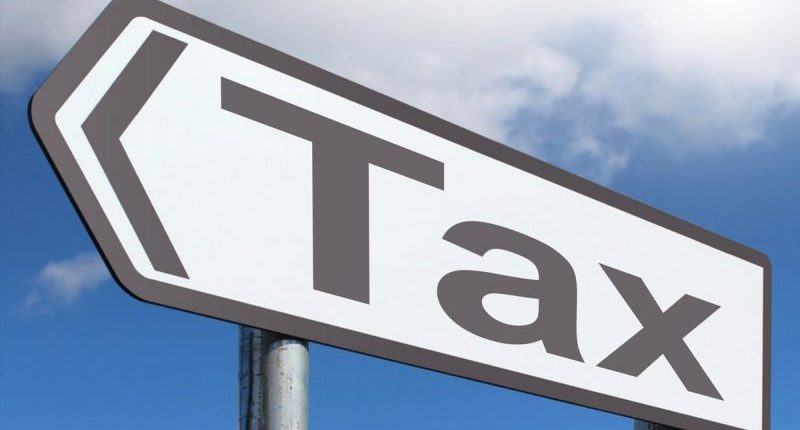Every individual, who has a source of income, has to pay tax if his income after taking exemptions and deductions exceeds the basic exemption limit. The Income Tax Act restricts the taxpayers to take deductions by imposing limitations. Most of the time, the taxpayer utilises all the deductions and has to search for another way for tax saving.
Suppose you consider taking a home loan and avail of additional tax advantage for the interest and principal amount paid. In that case, it is important to evaluate the correct loan amount and loan tenure that will save money. The interest amount paid for the whole tenure may outweigh the benefit of tax saving and property value appreciation.
Income tax benefits of a home loan
The deduction of Rs 1.5 lakh available under Section 80C for the home loan principal repayment is advantageous only if the said limit is not exhausted by any other alternatives, such as EPF contributions, life insurance premiums, children school tuition fees, ELSS investment, etc. Most often, these alternatives utilise the limit, and the principal amount repaid for a home loan is of no use to claim for tax benefits.
However, Section 24b of the Income Tax Act allows you a maximum deduction of Rs 2 lakh for interest paid on a self-occupied property. There is no other way to claim this deduction. Hence, the tax savings from the interest amount will be the deciding factor. In the case of a let-out property, there is no limit for claiming the deduction for interest paid under Section 24(b). However, you can adjust the loss from house property income with other heads of income only up to Rs 2 lakh. If the loss is not fully adjusted, you can carry the balance loss to eight subsequent years.
Evaluation of the best combination of home loan amount and tenure
To evaluate the appropriate loan amount and tenure, let us assume that the loan is availed for a self-occupied property, and the rate of interest for a home loan is 7% per annum. Let us understand tax benefits in the below scenarios:
- Loan amount Rs 30 lakh and tenure 15 years: After 15 years of loan repayment, you will end up paying Rs 18.53 lakh as an interest component. The interest portion in a home loan EMI comes down each month as principal repayment increases correspondingly. So, the annual interest amount remains higher in the initial years while it comes down drastically in the second half of the tenure towards the end. However, the tax saving on interest payment under section 24(b) is limited to Rs 2 lakh per year. Hence, for a Rs 30 lakh loan, the interest calculated at 7% exceeds Rs 2 lakh only in the first year. So after 15 years of loan repayment, you will end up repaying Rs 18.53 lakh of interest, and the total interest amount eligible for deduction is Rs 18.46 lakh. So if you are under the 30% tax bracket, you will save Rs 5.56 lakh.
- Loan amount of Rs 40 lakhs and tenure of repayment 30 years: For 40 lakhs of loan taken for 15 years tenure, you will pay a total interest of Rs 55.80 lakh. However, any interest you pay above Rs 2 lakh will not help you in tax savings. Hence, out of Rs 55.80 lakh of interest you pay, you can utilise Rs 48.25 lakhs for tax saving in 30 years.
Hence, you can see from the above two examples that, higher the loan amount with longer tenure, there is a double disadvantage of higher interest outgo without any tax-saving and longer period of loan outstanding. As a result, your interest liability increases much more than the increase in the tax saving.
Moreover, very few people are comfortable with debt for longer tenure just for saving taxes. It would be wise to choose the loan amount and tenure best for tax saving and suitable for timely debt payment.
To enhance the best mix of lower interest outgo and higher income tax saving, you can make partial prepayments to bring down your loan outstanding to a level where the annual interest is close to the Rs 2 lakh yearly limit.
Higher tax benefit by co-ownership
Moreover, if both spouses pay a high-income tax, they can avail a higher loan amount and enjoy the principal and interest deduction on the home loan separately. So, as a family, you can take a total deduction of Rs 3 lakh for principal repayment under Section 80C (Rs 1.5 lakh each) and Rs 4 lakh (Rs 2 lakh each) for the interest repayment under Section 24(b). Couples can choose a bigger home loan with a shorter tenure to help them in greater tax-saving and faster repayment of the loan.
Additional tax deduction under Section 80EEA
Further, if you have bought the house under the affordable housing category, an additional deduction of Rs 1.5 lakh can be taken under Section 80EEA, subject to specified conditions. However, a timeline to avail of this additional deduction has been extended to 31st March 2022. So, if you are eligible to take an additional deduction under Section 80EEA, you can avail of a maximum deduction of Rs 5 lakh (Rs 2 lakh u/s 24(b), Rs 1.5 lakh u./s 80EEA, and Rs 1.5 lakh u/s 80C).
For any clarifications/feedback on the topic, please get in touch with the writer at namita.shah@cleartax.in

I’m a chartered accountant and a functional CA writer by profession. Reading and travelling in free time enhances my creativity in work. I enjoy exploring my creative side, and so I keep myself engaged in learning new skills.




